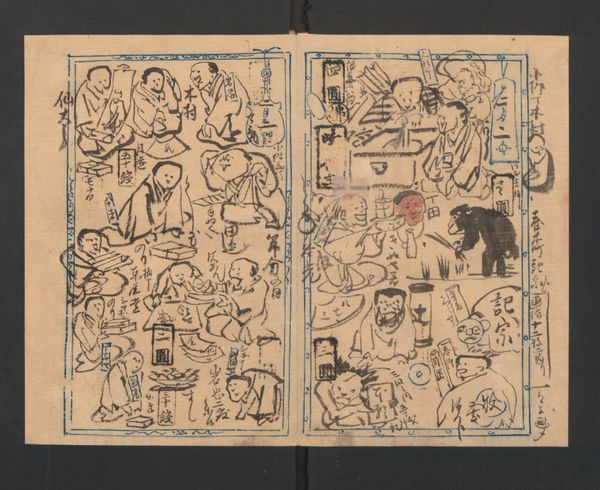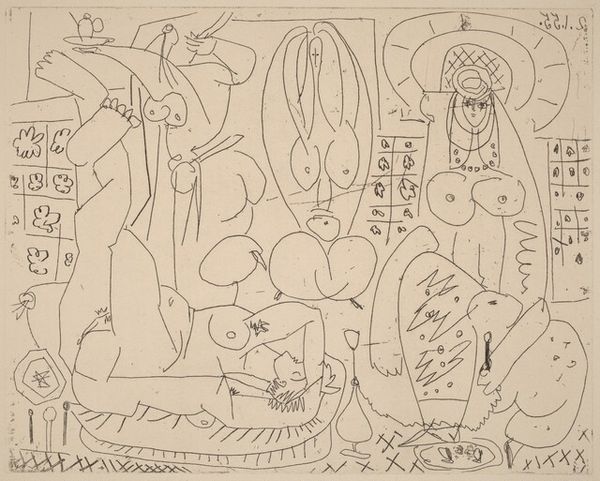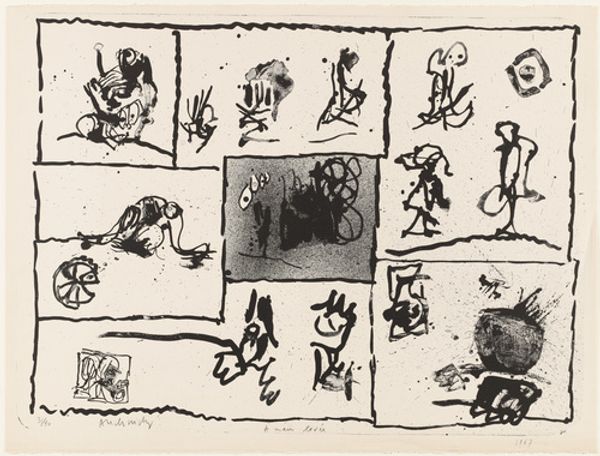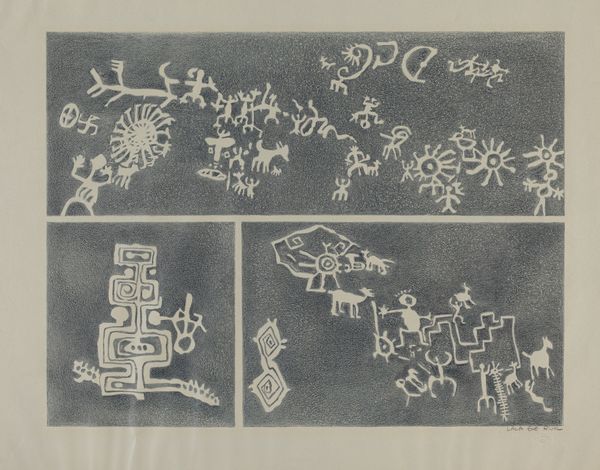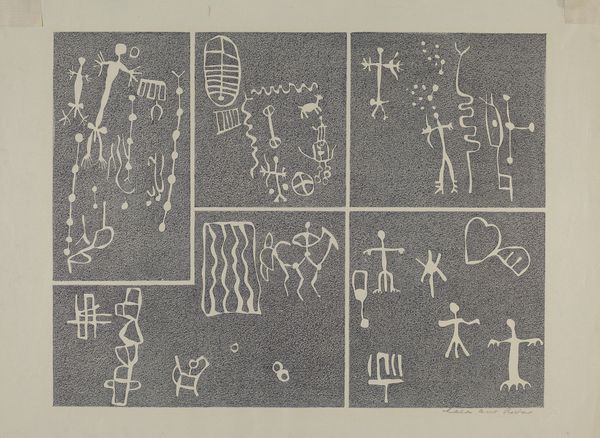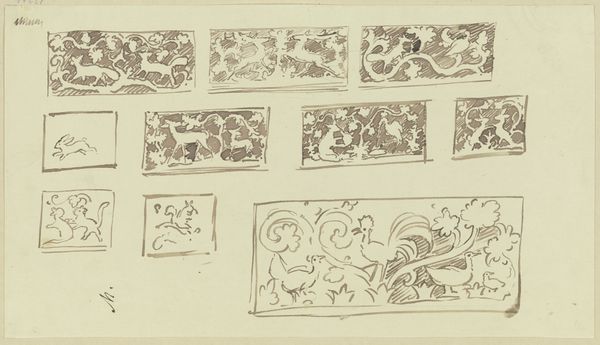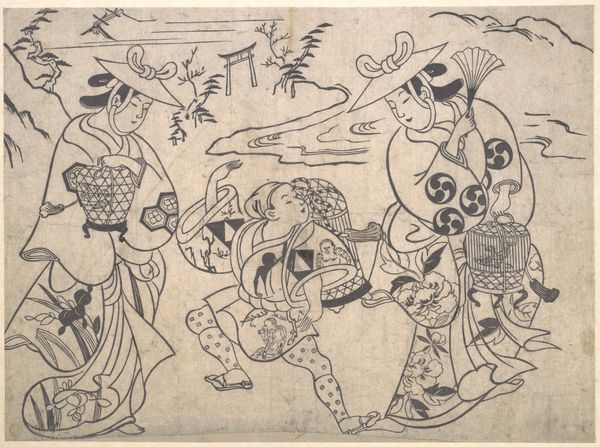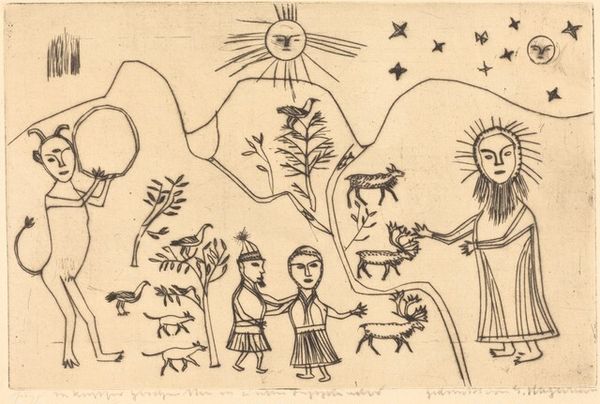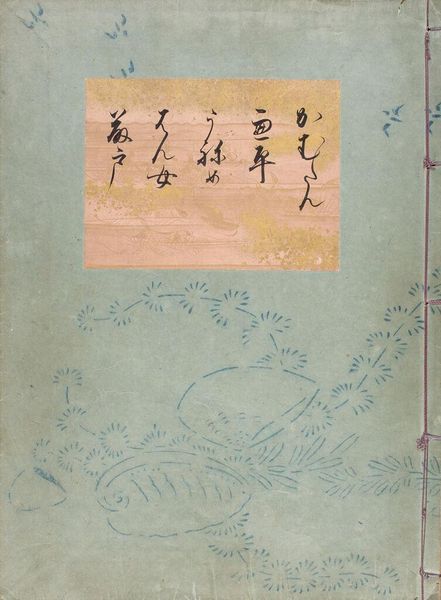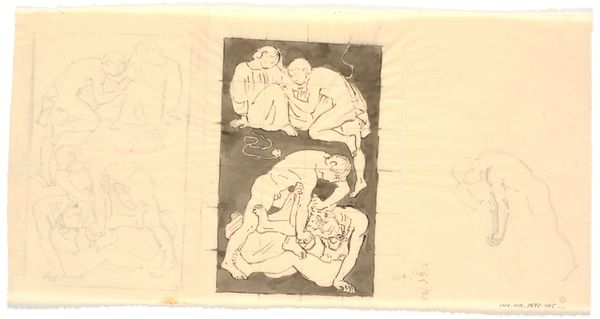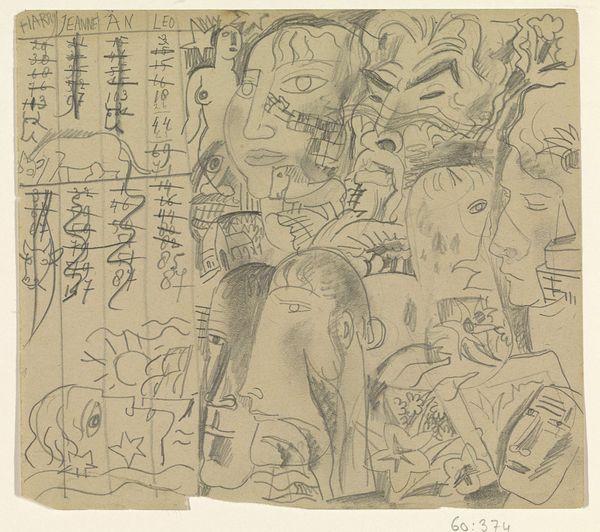
print, engraving
#
narrative-art
# print
#
asian-art
#
old engraving style
#
figuration
#
line
#
islamic-art
#
history-painting
#
engraving
Dimensions: height 214 mm, width 395 mm
Copyright: Rijks Museum: Open Domain
Curator: Standing before us is a print entitled "Tien incarnaties van de Indiase god Vishnu," created in 1723 by Bernard Picart. It is currently held in the Rijksmuseum. Editor: It's incredibly detailed, almost like a graphic novel page from the 18th century. The sheer number of figures and symbols makes my head spin a little. It has an ethereal feel but maybe that is because of the monochrome style, line engraving perhaps. Curator: Precisely. The work presents ten different incarnations of the Hindu god Vishnu, a powerful statement about cross-cultural representation and the colonial gaze. What stories and narratives were they attempting to convey with this piece at this moment in history? Editor: When you look closely, each section is crammed with detail, and that would involve someone manually incising these fine lines onto the printing plate. Given its repetitive nature and tight draughtsmanship I'm wondering how much collaboration took place. It's easy to see that labor materialized right on the paper and transformed to give this cultural output a material presence. Curator: Indeed. Think of the labor and global exchange networks required for production; the paper's manufacture, the engraver's tools, the distribution channels for the finished print. Picart, from his Western perspective, was engaging with complex non-Western religious iconography to address Enlightenment audiences. It forces one to think about the representation of power and how it manifests differently within disparate belief systems. Editor: It does push me to ask, whose narratives are elevated, whose labor is recognized, and how art reshapes perceptions? And while at first, it looked ethereal, the black lines contrast against the white which creates a dramatic composition when thinking about Vishnu's multiple forms. Curator: What is at stake when one culture attempts to translate another’s spiritual beliefs for their own consumption and understanding? Are we building bridges of understanding, or are we re-inscribing old power dynamics and prejudices in ink on paper? Editor: Definitely questions to consider as we examine our present through art. It all started by analyzing process, material and context, and seeing it through a materialist framework. It offers insight when confronting the political and social factors embedded in Bernard Picart's representation. Curator: A perspective like yours is useful when deconstructing how meaning gets built through historical and societal layers that connect these engravings with enduring legacies of both colonization and knowledge dissemination.
Comments
No comments
Be the first to comment and join the conversation on the ultimate creative platform.
